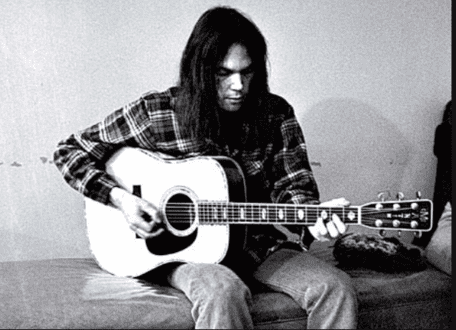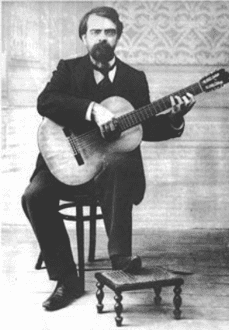How to Hold a Guitar
How you hold the guitar is crucial stuff, since, by feeling comfortable, you can focus your attention on creating sounds, rather than struggling with physical discomforts and awkwardness.
Within this lesson article, you’ll figure out with more detail on what the most popular way of holding the guitar is, alongside tips for holding the guitar in that generally accepted way.
Is There a Proper Way to Hold the Guitar?
As you’re learning to play the guitar, you may believe there’s only one way of handling the guitar, though that’s actually not quite true.
Hannes Coetzee
For example, you can see below Hannes Coetzee plays the guitar quite high up on his body, and actually incorporates a metal spoon, held in his mouth, to help fret notes!
Certainly, this isn’t what’s shown in “guitar school”, yet, if the primary function of guitars is indeed to produce compelling sounds, this way of holding the guitar works tremendously well.
Stanley Jordan
As another example, the phenomenal guitarist, Stanley Jordan, famously handles his guitar, such that he can play with his two-handed tapping technique. Holding the guitar in this way, he often centers himself more so over the guitar’s neck, rather than the guitar’s body.
Again, this isn’t necessarily conventional, but it further demonstrates that the mechanics of guitar is extremely fluid and subject to personal feel.
John Fahey
Lastly, as another example of alternative ways of handling guitars, many players, often in folk, bluegrass, and blues music, play “lap style” guitar, where, instead of sitting upright, the guitar lays flat upon your lap. Typically, too, a metal bar (called “steel” or a “slide”) is held by the fretting hand (almost like a portable fret) to effectively “fret” the notes.
It’s debated how this style first came about, but it may have come from the influence of Hawaiian showboat performers at the turn of the 20th century, who influenced guitar players to lay the guitar upon their laps and use a slide.
Here’s the wonderful John Fahey, demonstrating this technique beautifully over his song, Steamboat Gwine Round the Bend.
Once again, it goes to show that there are certainly alternative ways of holding the guitar, and there’s not necessarily a single right way.
There’s No “Proper” Way to Hold a Guitar
Thus, prior to exploring and describing the conventional way of holding guitars, it’s worthwhile to note that the guitar is simply a wooden tool which can be handled in different ways.

Certainly, there’s a conventional way of holding it, which you’ll read more about below, but it’s constantly evolved over the last 1,000 years, and continues to do so, so no guitar holding technique is likely permanent.
What’s the Most Popular Way to Hold a Guitar?
Far and away, the most common way of holding the guitar is in the upright “Spanish” style, where the soundhole points forward from your body, and the hourglass shape of the guitar’s side is cradled by either your left or right leg.
The Upright Position Is How Nearly All the Greats Hold the Guitar
In fact, a quick Youtube search of your favorite guitarist, whether it’s Hendrix or Segovia, will reveal that, when seated, they hold the guitar in this way.
Thus, though you can eventually try the more unconventional ways of handling the guitar (as described above, similar to Stanley Jordan or John Fahey) it’s best to at least start by holding the guitar in this upright position, since there’s far more learning material which assumes you’ll hold the guitar in this way, and the guitar’s physical design has been built with this posture in mind.
How to Hold the Guitar in the Upright Position
In a seated position, once you lay your guitar in this upright position, with its hourglass side nestled upon your thigh, there are a few more leg position, right hand, and left hand details to consider.
Which Leg Should You Lay it Upon?
Firstly, the guitar can lay upon your dominant leg, or your non-dominant leg.
For right-handed players, your “dominant” leg is your right leg, and your non-dominant leg is your left leg; the opposite is true for left-handed players.
Dominant Leg

Typically, for rock, metal, jazz, and blues, the guitar lays upon the dominant leg when seated.
Non-Dominant Leg

Though, for classical and flamenco, the guitar more often is played, resting on the non-dominant leg. In some cases, a footstool is also added for less back strain.
Based on the genre you plan to play, you can rest the guitar within your lap accordingly, but know that these aren’t strict rules; you can bend the rules according to your personal preferences.
How to Position Your Strumming Arm
When it comes to your strumming arm, it’s important to “hug” your guitar, wrapping your elbow around the guitar and holding it firmly against your body. This provides two key advantages: you can keep the guitar stable, but you’ll eventually find you can gain leverage on the guitar, allowing you to fret notes with greater ease.

Also, by wrapping your strumming arm around the guitar’s body in that fashion, your strumming hand will hover almost parallel to the strings, which is important; not only does that allow you to pick the strings with the proper hand angle, but you’ll eventually be able to “palm mute” the strings, which is a technique you’ll learn about as an intermediate guitar player.
How to Position Your Fretting Arm
Your fretting arm is best poised by first positioning your fretting fingers, then letting that determine your wrist positioning, then forearm positioning, then shoulder positioning; in other words, it all starts with your fretting fingers.

First, hold you’ll grasp your neck almost as if you’re about to do the Italian hand gesture emoji.

This allows your fretting hand to span its widest, and also allows it to reach the topmost and bottommost strings with the greatest ease. Begin by planting your thumb upon the rear of the neck at its equator, pointing straight up to the ceiling. Then, flare out your fingers so that they spread from the center of your palm. From there, test various wrist and forearm positions that accommodate this fretting hand position; the result will be your fretting arm’s best posture.